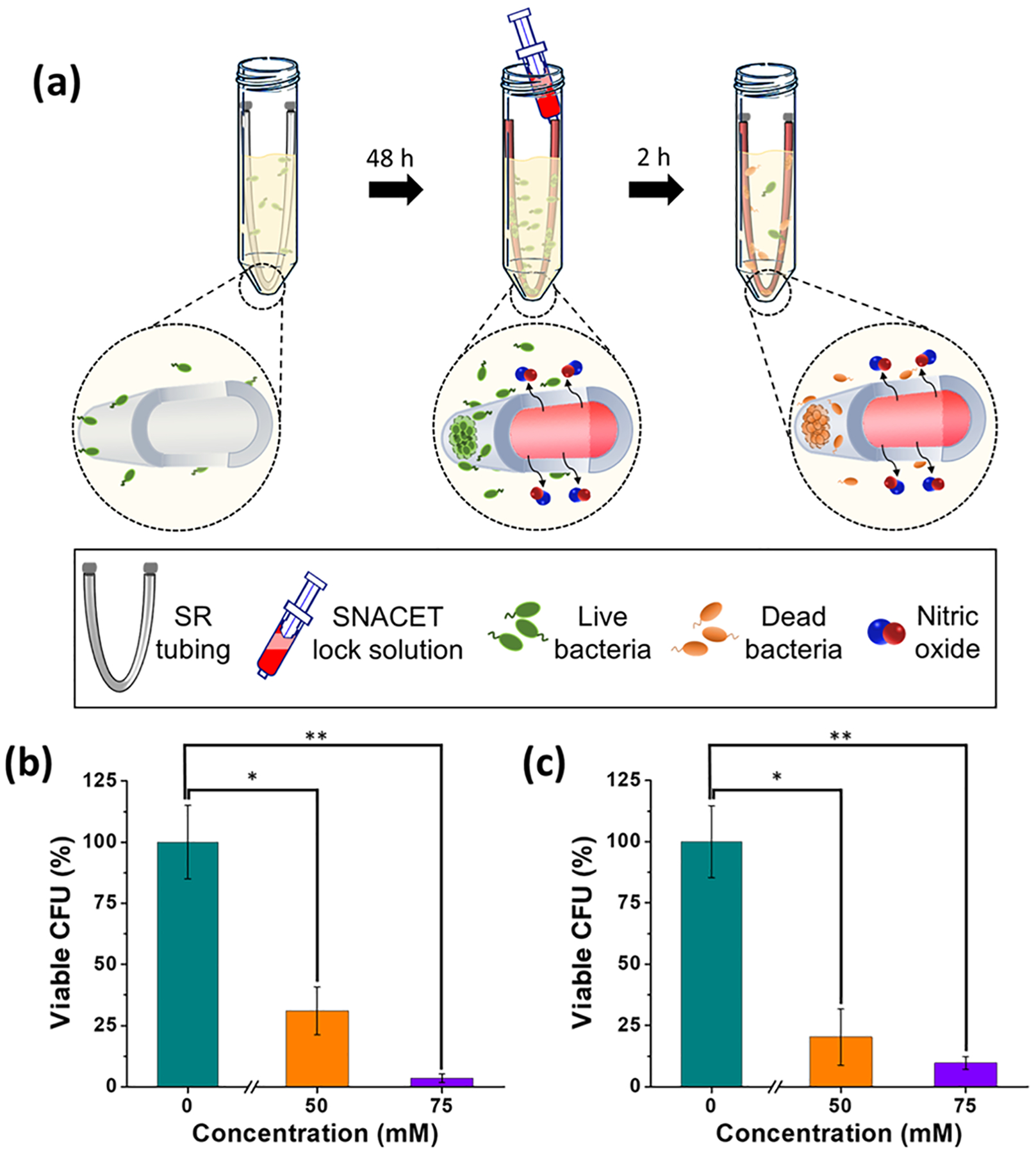Figure 9.

(a) Schematic representation of the in vitro experiment to evaluate the efficacy of the SNACET lock solutions against established catheter infections. The outer surfaces of the catheters were infected by incubating in the bacterial inoculum for 48 h, followed by infusion of the SNACET or control lock solutions within the inner lumen of the catheter. After 2 h exposure to the lock solutions, the viable bacteria on catheter surfaces was determined by plate counting. Percent reduction in viable (b) S. aureus and (c) E. coli CFUs on preinfected catheters after exposure to the SNACET or control lock solutions that were instilled within the catheter samples for 2 h. Data represent the mean ± standard error of the mean (n = 3). p-values ≤0.05 and ≤0.01 were indicated with * and **, respectively.
